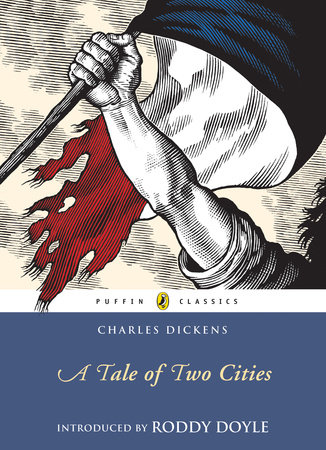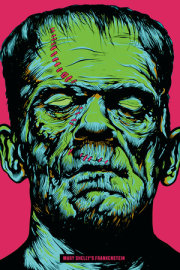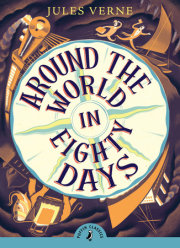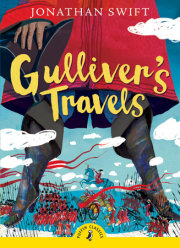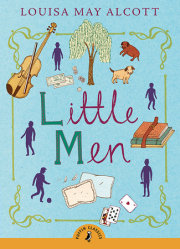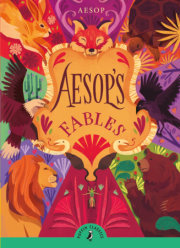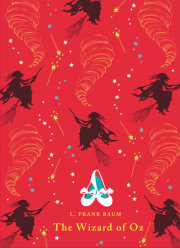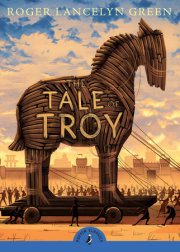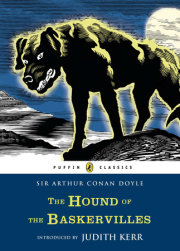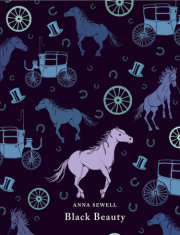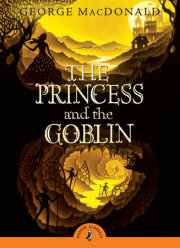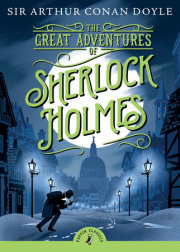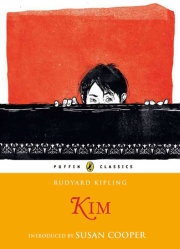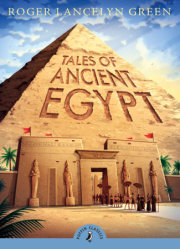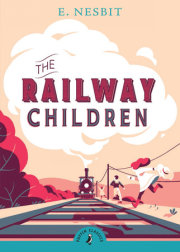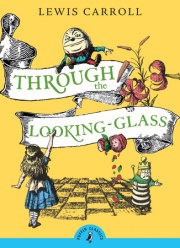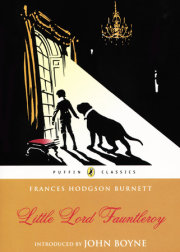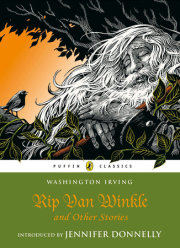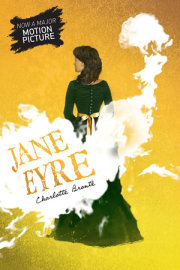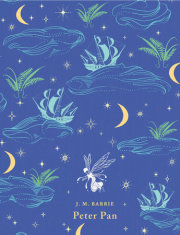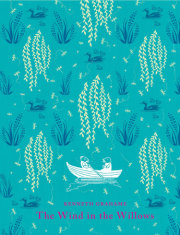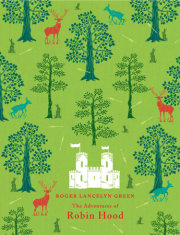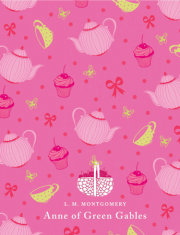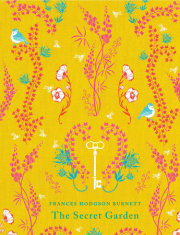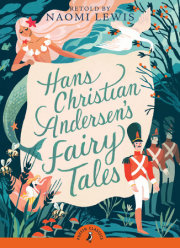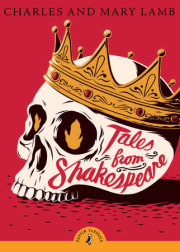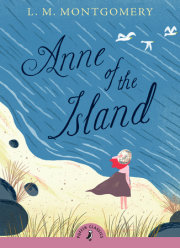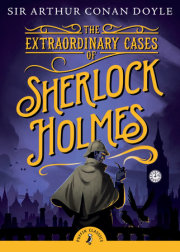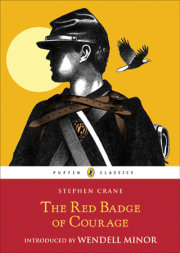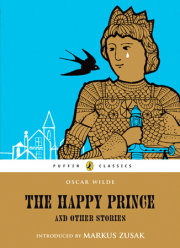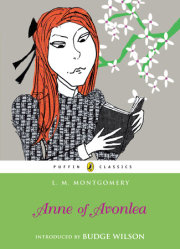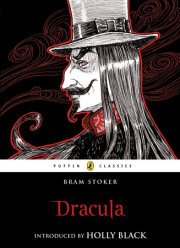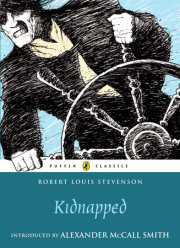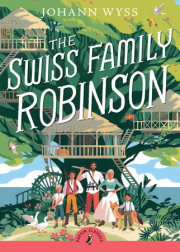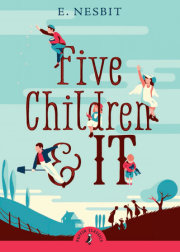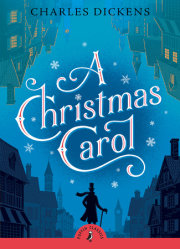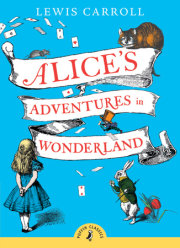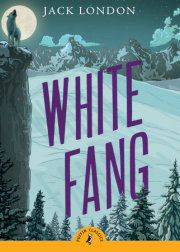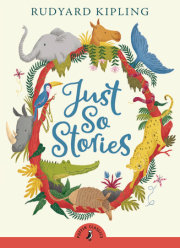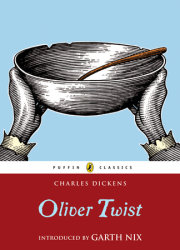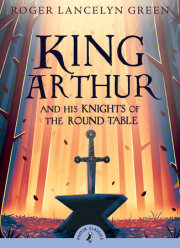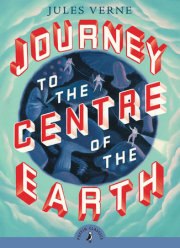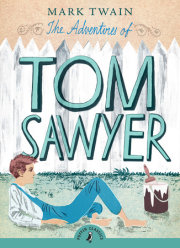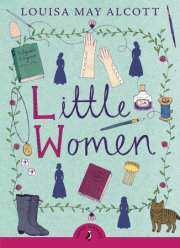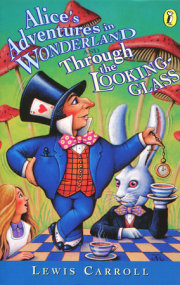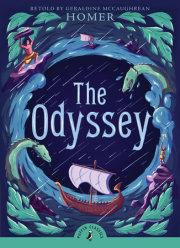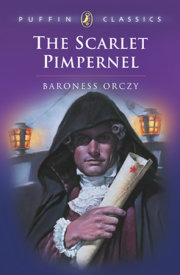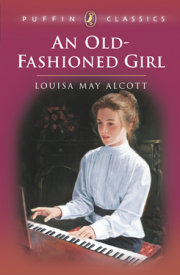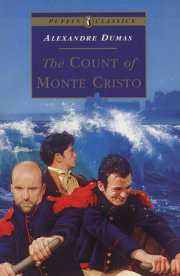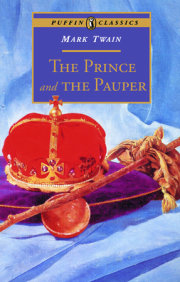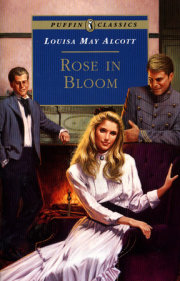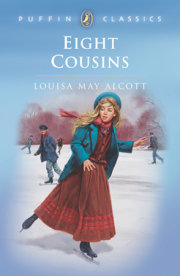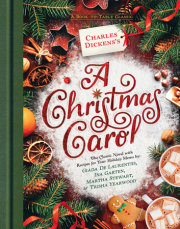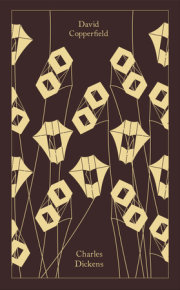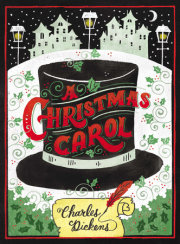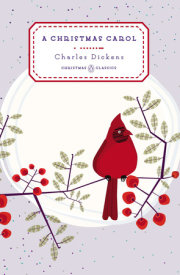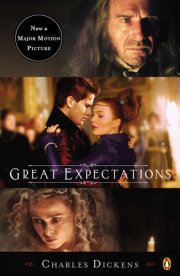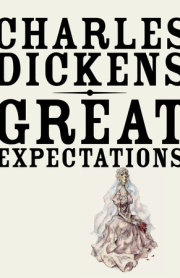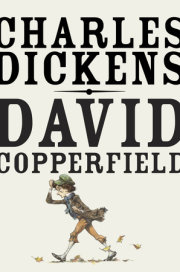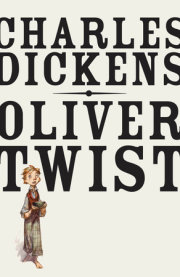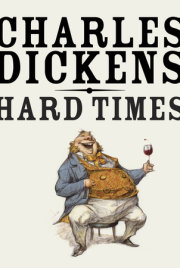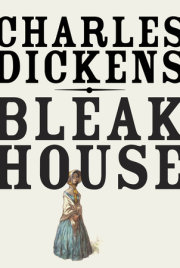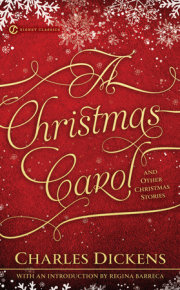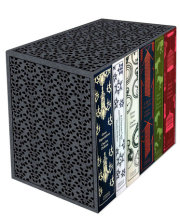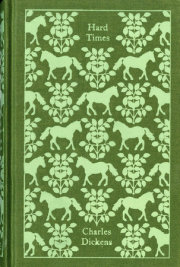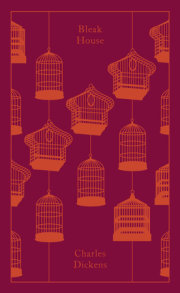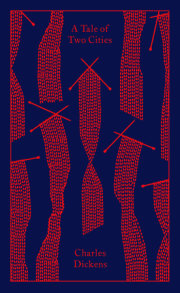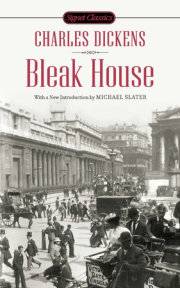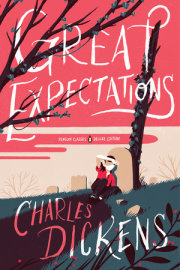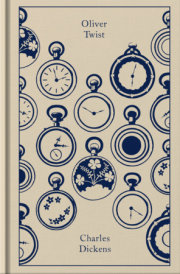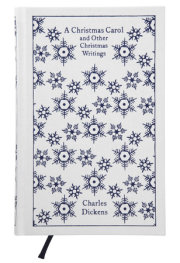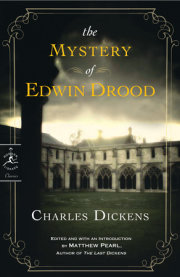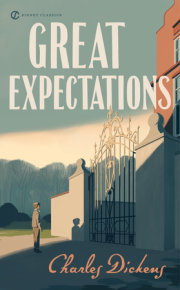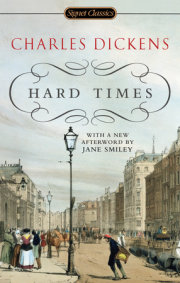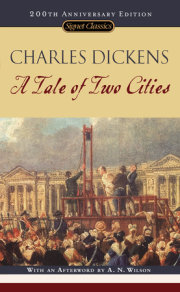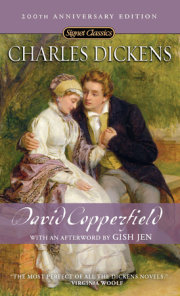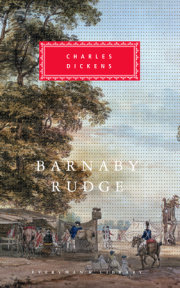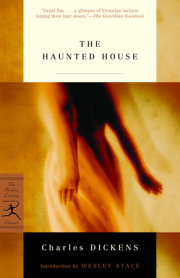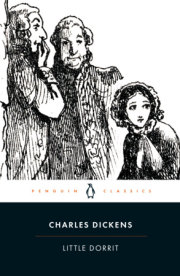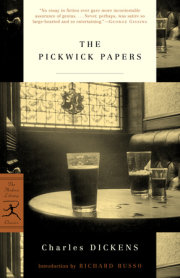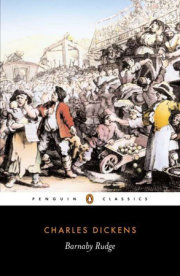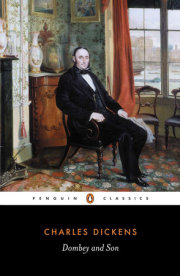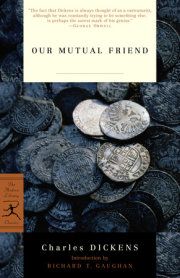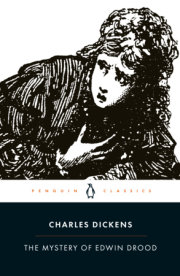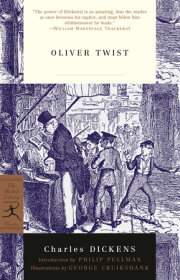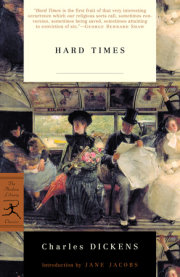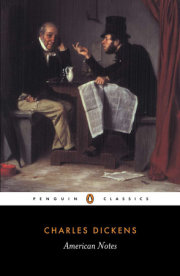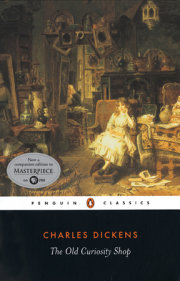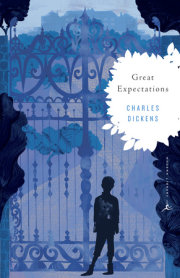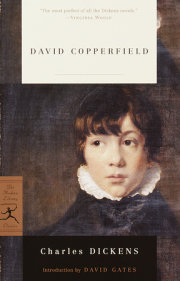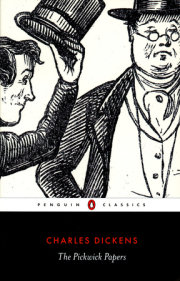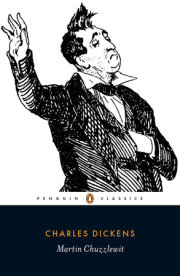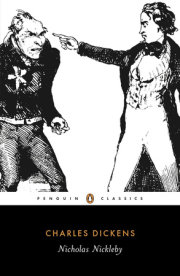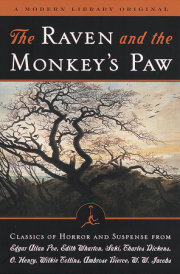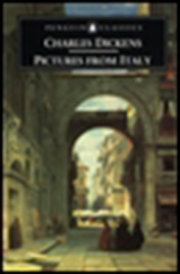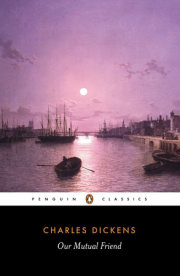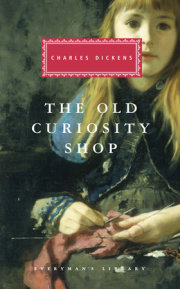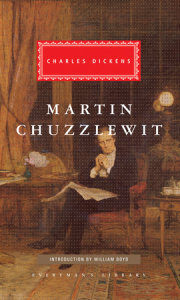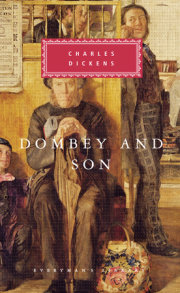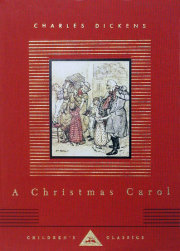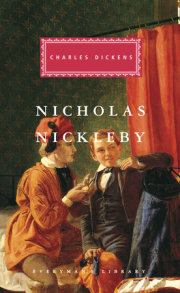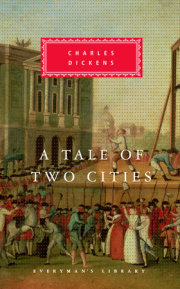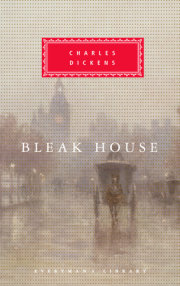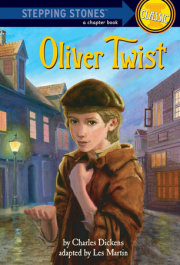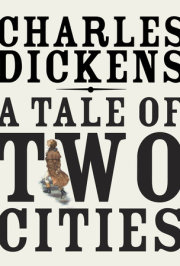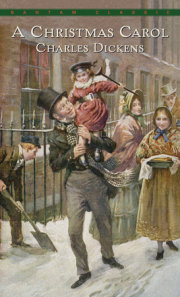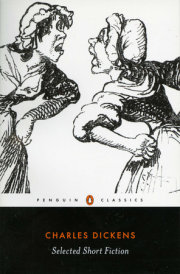

Are you still there?
If not, we’ll close this session in:
A Tale of Two Cities
Abridged Edition
Part of Puffin Classics
Author Charles Dickens
Introduction by Roddy Doyle
Paperback
$8.99 US
5.13"W
x
7"H
x
1.13"D
|
11 oz
|
32 per carton
On sale Mar 05, 2009
|
384 Pages
|
9780141325545
Age 10 and up
|
Grade 5 & Up
Charles Darnay and Sydney Carton are alike in appearance, different in character and in love with the same woman. In the midst of the French Revolution, Darnay, who has fled to London to escape the cruelty of the French nobility, must return to Paris to rescue his servant from death. But he endangers his own life and is captured. Carton may be able to help, but will his resemblance be enough to save Darnay's life? With an enticing introduction by bestselling author, Roddy Doyle.
“No writer of the age was more beloved than Dickens.” —Tina Jordan, The New York Times
“[A Tale of Two Cities] has the best of Dickens and the worst of Dickens: a dark, driven opening, and a celestial but melodramatic ending; a terrifyingly demonic villainess and (even by Dickens’ standards) an impossibly angelic heroine. Though its version of the French Revolution is brutally simplified, its engagement with the immense moral themes of rebirth and terror, justice, and sacrifice gets right to the heart of the matter…for every reader in the past hundred and forty years and for hundreds to come, it is an unforgettable ride.” —from the Everyman's Library introduction by Simon Schama
“[A Tale of Two Cities] has the best of Dickens and the worst of Dickens: a dark, driven opening, and a celestial but melodramatic ending; a terrifyingly demonic villainess and (even by Dickens’ standards) an impossibly angelic heroine. Though its version of the French Revolution is brutally simplified, its engagement with the immense moral themes of rebirth and terror, justice, and sacrifice gets right to the heart of the matter…for every reader in the past hundred and forty years and for hundreds to come, it is an unforgettable ride.” —from the Everyman's Library introduction by Simon Schama
Charles Dickens was born in a little house in Landport, Portsea, England, on February 7, 1812. The second of eight children, he grew up in a family frequently beset by financial insecurity. When the family fortunes improved, Charles went back to school, after which he became an office boy, a freelance reporter, and finally an author. With Pickwick Papers (1836–37) he achieved immediate fame. In a few years he was easily the most popular and respected writer of his time. It has been estimated that one out of every ten persons in Victorian England was a Dickens reader. Oliver Twist (1837), Nicholas Nickleby (1838–39), and The Old Curiosity Shop (1840-41) were huge successes. Martin Chuzzlewit (1843–44) was less so, but Dickens followed it with his unforgettable, A Christmas Carol (1843), Bleak House (1852–53), Hard Times (1854), and Little Dorrit (1855–57), which reveal his deepening concern for the injustices of British society. A Tale of Two Cities (1859), Great Expectations (1860–61), and Our Mutual Friend (1864–65) complete his major works.
View titles by Charles Dickens
About
Charles Darnay and Sydney Carton are alike in appearance, different in character and in love with the same woman. In the midst of the French Revolution, Darnay, who has fled to London to escape the cruelty of the French nobility, must return to Paris to rescue his servant from death. But he endangers his own life and is captured. Carton may be able to help, but will his resemblance be enough to save Darnay's life? With an enticing introduction by bestselling author, Roddy Doyle.
Praise
“No writer of the age was more beloved than Dickens.” —Tina Jordan, The New York Times
“[A Tale of Two Cities] has the best of Dickens and the worst of Dickens: a dark, driven opening, and a celestial but melodramatic ending; a terrifyingly demonic villainess and (even by Dickens’ standards) an impossibly angelic heroine. Though its version of the French Revolution is brutally simplified, its engagement with the immense moral themes of rebirth and terror, justice, and sacrifice gets right to the heart of the matter…for every reader in the past hundred and forty years and for hundreds to come, it is an unforgettable ride.” —from the Everyman's Library introduction by Simon Schama
“[A Tale of Two Cities] has the best of Dickens and the worst of Dickens: a dark, driven opening, and a celestial but melodramatic ending; a terrifyingly demonic villainess and (even by Dickens’ standards) an impossibly angelic heroine. Though its version of the French Revolution is brutally simplified, its engagement with the immense moral themes of rebirth and terror, justice, and sacrifice gets right to the heart of the matter…for every reader in the past hundred and forty years and for hundreds to come, it is an unforgettable ride.” —from the Everyman's Library introduction by Simon Schama
Author
Charles Dickens was born in a little house in Landport, Portsea, England, on February 7, 1812. The second of eight children, he grew up in a family frequently beset by financial insecurity. When the family fortunes improved, Charles went back to school, after which he became an office boy, a freelance reporter, and finally an author. With Pickwick Papers (1836–37) he achieved immediate fame. In a few years he was easily the most popular and respected writer of his time. It has been estimated that one out of every ten persons in Victorian England was a Dickens reader. Oliver Twist (1837), Nicholas Nickleby (1838–39), and The Old Curiosity Shop (1840-41) were huge successes. Martin Chuzzlewit (1843–44) was less so, but Dickens followed it with his unforgettable, A Christmas Carol (1843), Bleak House (1852–53), Hard Times (1854), and Little Dorrit (1855–57), which reveal his deepening concern for the injustices of British society. A Tale of Two Cities (1859), Great Expectations (1860–61), and Our Mutual Friend (1864–65) complete his major works.
View titles by Charles Dickens
Other books in this series
-
9780593203392$15.99 USHardcoverPuffin BooksAug 25, 2020Age 12 and up
-
9780141366296$8.99 USPaperbackPuffin BooksOct 11, 2016Age 10 and up
-
9780141366302$9.99 USPaperbackPuffin BooksApr 19, 2016Age 10 and up
-
9780141366081$8.99 USPaperbackPuffin BooksMar 08, 2016Age 10 and up
-
9780147514325$105.00 USBoxed SetPuffin BooksOct 16, 2014Age 7 and up
-
9780141345246$7.99 USPaperbackPuffin BooksMay 02, 2013Age 10 and up
-
9780141345253$8.99 USPaperbackPuffin BooksMay 02, 2013Age 10 and up
-
9780142423356$14.99 USPaperbackPuffin BooksSep 13, 2012Age 10 and up
-
9780141341712$16.99 USHardcoverPuffin BooksMay 10, 2012Age 10 and up
-
9780141341736$16.99 USHardcoverPuffin BooksMay 10, 2012Age 10 and up
-
9780141341965$7.99 USPaperbackPuffin BooksMay 10, 2012Age 10 and up
-
9780141329390$7.99 USPaperbackPuffin BooksJan 12, 2012Age 10 and up
-
9780141334882$16.99 USHardcoverPuffin BooksSep 08, 2011Age 10 and up
-
9780141336541$16.99 USHardcoverPuffin BooksSep 08, 2011Age 10 and up
-
9780141331119$7.99 USPaperbackPuffin BooksJun 09, 2011Age 10 and up
-
9780141331645$7.99 USPaperbackPuffin BooksJun 09, 2011Age 10 and up
-
9780141332482$8.99 USPaperbackPuffin BooksJun 09, 2011Age 10 and up
-
9780141332499$8.99 USPaperbackPuffin BooksJun 09, 2011Age 10 and up
-
9780141332505$7.99 USPaperbackPuffin BooksJun 09, 2011Age 10 and up
-
9780141332598$7.99 USPaperbackPuffin BooksMay 12, 2011Age 10 and up
-
9780141321608$8.99 USPaperbackPuffin BooksMar 17, 2011Age 10 and up
-
9780141330075$7.99 USPaperbackPuffin BooksMar 17, 2011Age 10 and up
-
9780141330143$7.99 USPaperbackPuffin BooksMar 17, 2011Age 10 and up
-
9780141330921$7.99 USPaperbackPuffin BooksMar 17, 2011Age 10 and up
-
9780141331201$8.99 USPaperbackPuffin BooksMar 17, 2011Age 8-12 years
-
9780142419694$14.99 USPaperbackPuffin BooksMar 17, 2011Age 12 and up
-
9780141329819$16.99 USHardcoverPuffin BooksSep 30, 2010Age 10 and up
-
9780141329826$16.99 USHardcoverPuffin BooksSep 30, 2010Age 10 and up
-
9780141334844$17.99 USHardcoverPuffin BooksSep 30, 2010Age 10 and up
-
9780141334899$16.99 USHardcoverPuffin BooksSep 30, 2010Age 10 and up
-
9780141334905$17.99 USHardcoverPuffin BooksSep 30, 2010Age 10 and up
-
9780141336534$17.99 USHardcoverPuffin BooksSep 30, 2010Age 10 and up
-
9780141329017$7.99 USPaperbackPuffin BooksJun 24, 2010Age 10 and up
-
9780141321684$9.99 USPaperbackPuffin BooksMay 27, 2010Age 10 and up
-
9780141327365$7.99 USPaperbackPuffin BooksApr 01, 2010Age 10 and up
-
9780141330044$8.99 USPaperbackPuffin BooksApr 01, 2010Age 10 and up
-
9780141327525$7.99 USPaperbackPuffin BooksNov 12, 2009Age 10 and up
-
9780141327792$7.99 USPaperbackPuffin BooksNov 12, 2009Age 10 and up
-
9780141326139$7.99 USPaperbackPuffin BooksSep 17, 2009Age 10 and up
-
9780141325668$9.99 USPaperbackPuffin BooksJun 11, 2009Age 10 and up
-
9780141326023$8.99 USPaperbackPuffin BooksJun 11, 2009Age 10 and up
-
9780141322568$8.99 USPaperbackPuffin BooksMar 05, 2009Age 10 and up
-
9780141325286$8.99 USPaperbackPuffin BooksMar 05, 2009Age 10 and up
-
9780141325293$8.99 USPaperbackPuffin BooksMar 05, 2009Age 10 and up
-
Abridged Edition9780141325309$9.99 USPaperbackPuffin BooksMar 05, 2009Age 10 and up
-
9780141321615$7.99 USPaperbackPuffin BooksSep 11, 2008Age 10 and up
-
9780141324524$7.99 USPaperbackPuffin BooksSep 11, 2008Age 10 and up
-
9780141321073$7.99 USPaperbackPuffin BooksJun 19, 2008Age 10 and up
-
9780141321110$8.99 USPaperbackPuffin BooksJun 19, 2008Age 10 and up
-
9780141321622$7.99 USPaperbackPuffin BooksJun 19, 2008Age 10 and up
-
9780141322438$8.99 USPaperbackPuffin BooksJun 19, 2008Age 10 and up
-
9780141321004$8.99 USPaperbackPuffin BooksMar 27, 2008Age 10 and up
-
9780141321011$9.99 USPaperbackPuffin BooksMar 27, 2008Age 10 and up
-
9780141321042$8.99 USPaperbackPuffin BooksMar 27, 2008Age 10 and up
-
9780141321103$8.99 USPaperbackPuffin BooksMar 27, 2008Age 8-12 years
-
9780142408766$10.99 USPaperbackPuffin BooksMar 27, 2008Age 10 and up
-
9780140383515$8.99 USPaperbackPuffin BooksApr 01, 1998Age 10 and up
-
9780140374544$5.99 USPaperbackPuffin BooksMar 01, 1997Age 10 and up
-
9780140374490$9.99 USPaperbackPuffin BooksNov 01, 1996Age 10 and up
-
9780140373530$8.99 USPaperbackPuffin BooksAug 01, 1996Age 10 and up
-
9780140367492$8.99 USPaperbackPuffin BooksFeb 01, 1996Age 10 and up
-
An Abridgement by Lord Sudley9780140367478$7.99 USPaperbackPuffin BooksNov 01, 1995Age 10 and up
-
9780140374513$5.99 USPaperbackPuffin BooksSep 01, 1995Age 10 and up
-
9780140374568$8.99 USPaperbackPuffin BooksSep 01, 1995Age 10 and up
-
9780593203392$15.99 USHardcoverPuffin BooksAug 25, 2020Age 12 and up
-
9780141366296$8.99 USPaperbackPuffin BooksOct 11, 2016Age 10 and up
-
9780141366302$9.99 USPaperbackPuffin BooksApr 19, 2016Age 10 and up
-
9780141366081$8.99 USPaperbackPuffin BooksMar 08, 2016Age 10 and up
-
9780147514325$105.00 USBoxed SetPuffin BooksOct 16, 2014Age 7 and up
-
9780141345246$7.99 USPaperbackPuffin BooksMay 02, 2013Age 10 and up
-
9780141345253$8.99 USPaperbackPuffin BooksMay 02, 2013Age 10 and up
-
9780142423356$14.99 USPaperbackPuffin BooksSep 13, 2012Age 10 and up
-
9780141341712$16.99 USHardcoverPuffin BooksMay 10, 2012Age 10 and up
-
9780141341736$16.99 USHardcoverPuffin BooksMay 10, 2012Age 10 and up
-
9780141341965$7.99 USPaperbackPuffin BooksMay 10, 2012Age 10 and up
-
9780141329390$7.99 USPaperbackPuffin BooksJan 12, 2012Age 10 and up
-
9780141334882$16.99 USHardcoverPuffin BooksSep 08, 2011Age 10 and up
-
9780141336541$16.99 USHardcoverPuffin BooksSep 08, 2011Age 10 and up
-
9780141331119$7.99 USPaperbackPuffin BooksJun 09, 2011Age 10 and up
-
9780141331645$7.99 USPaperbackPuffin BooksJun 09, 2011Age 10 and up
-
9780141332482$8.99 USPaperbackPuffin BooksJun 09, 2011Age 10 and up
-
9780141332499$8.99 USPaperbackPuffin BooksJun 09, 2011Age 10 and up
-
9780141332505$7.99 USPaperbackPuffin BooksJun 09, 2011Age 10 and up
-
9780141332598$7.99 USPaperbackPuffin BooksMay 12, 2011Age 10 and up
-
9780141321608$8.99 USPaperbackPuffin BooksMar 17, 2011Age 10 and up
-
9780141330075$7.99 USPaperbackPuffin BooksMar 17, 2011Age 10 and up
-
9780141330143$7.99 USPaperbackPuffin BooksMar 17, 2011Age 10 and up
-
9780141330921$7.99 USPaperbackPuffin BooksMar 17, 2011Age 10 and up
-
9780141331201$8.99 USPaperbackPuffin BooksMar 17, 2011Age 8-12 years
-
9780142419694$14.99 USPaperbackPuffin BooksMar 17, 2011Age 12 and up
-
9780141329819$16.99 USHardcoverPuffin BooksSep 30, 2010Age 10 and up
-
9780141329826$16.99 USHardcoverPuffin BooksSep 30, 2010Age 10 and up
-
9780141334844$17.99 USHardcoverPuffin BooksSep 30, 2010Age 10 and up
-
9780141334899$16.99 USHardcoverPuffin BooksSep 30, 2010Age 10 and up
-
9780141334905$17.99 USHardcoverPuffin BooksSep 30, 2010Age 10 and up
-
9780141336534$17.99 USHardcoverPuffin BooksSep 30, 2010Age 10 and up
-
9780141329017$7.99 USPaperbackPuffin BooksJun 24, 2010Age 10 and up
-
9780141321684$9.99 USPaperbackPuffin BooksMay 27, 2010Age 10 and up
-
9780141327365$7.99 USPaperbackPuffin BooksApr 01, 2010Age 10 and up
-
9780141330044$8.99 USPaperbackPuffin BooksApr 01, 2010Age 10 and up
-
9780141327525$7.99 USPaperbackPuffin BooksNov 12, 2009Age 10 and up
-
9780141327792$7.99 USPaperbackPuffin BooksNov 12, 2009Age 10 and up
-
9780141326139$7.99 USPaperbackPuffin BooksSep 17, 2009Age 10 and up
-
9780141325668$9.99 USPaperbackPuffin BooksJun 11, 2009Age 10 and up
-
9780141326023$8.99 USPaperbackPuffin BooksJun 11, 2009Age 10 and up
-
9780141322568$8.99 USPaperbackPuffin BooksMar 05, 2009Age 10 and up
-
9780141325286$8.99 USPaperbackPuffin BooksMar 05, 2009Age 10 and up
-
9780141325293$8.99 USPaperbackPuffin BooksMar 05, 2009Age 10 and up
-
Abridged Edition9780141325309$9.99 USPaperbackPuffin BooksMar 05, 2009Age 10 and up
-
9780141321615$7.99 USPaperbackPuffin BooksSep 11, 2008Age 10 and up
-
9780141324524$7.99 USPaperbackPuffin BooksSep 11, 2008Age 10 and up
-
9780141321073$7.99 USPaperbackPuffin BooksJun 19, 2008Age 10 and up
-
9780141321110$8.99 USPaperbackPuffin BooksJun 19, 2008Age 10 and up
-
9780141321622$7.99 USPaperbackPuffin BooksJun 19, 2008Age 10 and up
-
9780141322438$8.99 USPaperbackPuffin BooksJun 19, 2008Age 10 and up
-
9780141321004$8.99 USPaperbackPuffin BooksMar 27, 2008Age 10 and up
-
9780141321011$9.99 USPaperbackPuffin BooksMar 27, 2008Age 10 and up
-
9780141321042$8.99 USPaperbackPuffin BooksMar 27, 2008Age 10 and up
-
9780141321103$8.99 USPaperbackPuffin BooksMar 27, 2008Age 8-12 years
-
9780142408766$10.99 USPaperbackPuffin BooksMar 27, 2008Age 10 and up
-
9780140383515$8.99 USPaperbackPuffin BooksApr 01, 1998Age 10 and up
-
9780140374544$5.99 USPaperbackPuffin BooksMar 01, 1997Age 10 and up
-
9780140374490$9.99 USPaperbackPuffin BooksNov 01, 1996Age 10 and up
-
9780140373530$8.99 USPaperbackPuffin BooksAug 01, 1996Age 10 and up
-
9780140367492$8.99 USPaperbackPuffin BooksFeb 01, 1996Age 10 and up
-
An Abridgement by Lord Sudley9780140367478$7.99 USPaperbackPuffin BooksNov 01, 1995Age 10 and up
-
9780140374513$5.99 USPaperbackPuffin BooksSep 01, 1995Age 10 and up
-
9780140374568$8.99 USPaperbackPuffin BooksSep 01, 1995Age 10 and up
Other Books by this Author
-
A Book-to-Table Classic9780451479921$25.00 USHardcoverPuffin BooksOct 16, 2018
-
9780241240366$30.00 USHardcoverPenguin ClassicsMay 17, 2016
-
9780147512895$9.99 USPaperbackPuffin BooksOct 16, 2014Age 8-12 years
-
9780143122494$20.00 USHardcoverPenguin ClassicsOct 08, 2014
-
9780143126454$22.00 USPaperbackPenguin BooksOct 23, 2013
-
9780143123798$28.00 USHardcoverPenguin BooksDec 12, 2012
-
9780451532022$5.95 USMass Market PaperbackSignetDec 06, 2011
-
And Other Christmas Books9780307947215$11.00 USPaperbackVintageNov 29, 2011
-
Great Expectations; Hard Times; Oliver Twist; A Christmas Carol; Bleak House; A Tale of Two Cities9780141198415$130.00 USBoxed SetPenguin ClassicsNov 23, 2011
-
9780141198354$29.00 USHardcoverPenguin ClassicsNov 16, 2011
-
9780141196909$27.00 USHardcoverPenguin ClassicsApr 26, 2011
-
9780451531902$8.95 USMass Market PaperbackSignetApr 05, 2011
-
(Penguin Classics Deluxe Edition)9780143106272$18.00 USPaperbackPenguin ClassicsDec 28, 2010
-
9780141192499$25.00 USHardcoverPenguin ClassicsSep 28, 2010
-
9780141195858$26.00 USHardcoverPenguin ClassicsSep 28, 2010
-
Introduction by Margaret Atwood9780307271754$22.00 USHardcoverEveryman's LibraryNov 10, 2009
-
9780812980455$20.00 USPaperbackModern LibraryOct 06, 2009
-
9780451531186$6.95 USMass Market PaperbackSignetFeb 03, 2009
-
9780451530578$6.95 USMass Market PaperbackSignetFeb 06, 2007
-
9780451530042$7.95 USMass Market PaperbackSignetFeb 07, 2006
-
Introduction by Peter Ackroyd9780307262905$30.00 USHardcoverEveryman's LibraryNov 08, 2005
-
9780451529718$5.95 USMass Market PaperbackSignetApr 05, 2005
-
9780812973068$21.00 USPaperbackModern LibraryOct 12, 2004
-
9780141439969$14.00 USPaperbackPenguin ClassicsJan 27, 2004
-
9780812967272$23.00 USPaperbackModern LibraryAug 12, 2003
-
9780140437287$14.00 USPaperbackPenguin ClassicsApr 29, 2003
-
9780140435467$12.00 USPaperbackPenguin ClassicsNov 26, 2002
-
9780375761140$13.00 USPaperbackModern LibrarySep 10, 2002
-
9780140439267$12.00 USPaperbackPenguin ClassicsMay 28, 2002
-
9780375759147$13.00 USPaperbackModern LibraryMar 12, 2002
-
9780375757846$17.00 USPaperbackModern LibraryOct 09, 2001
-
9780375758881$12.00 USPaperbackModern LibraryOct 09, 2001
-
Revised Edition9780140436495$19.00 USPaperbackPenguin ClassicsJul 01, 2001
-
9780140437423$13.00 USPaperbackPenguin ClassicsJul 01, 2001
-
9780375757013$11.00 USPaperbackModern LibraryFeb 13, 2001
-
9780679783411$12.00 USPaperbackModern LibraryNov 28, 2000
-
9780140436112$13.00 USPaperbackPenguin ClassicsAug 01, 2000
-
9780140436143$14.00 USPaperbackPenguin ClassicsAug 01, 2000
-
9780140435122$10.00 USPaperbackPenguin ClassicsNov 01, 1999
-
Classics of Horror and Suspense from the Modern LibraryAuthor: Charles Dickens, Author: O. Henry, Author: Edgar Allan Poe, Author: Edith Wharton, Author: Saki9780375752162$15.00 USPaperbackModern LibrarySep 29, 1998
-
9780140434316$19.00 USPaperbackPenguin ClassicsJul 01, 1998
-
9780140434972$13.00 USPaperbackPenguin ClassicsFeb 01, 1998
-
9780679874669$5.99 USPaperbackRandom House Books for Young ReadersNov 19, 1996Age 6-9 years
-
9780140433456$21.00 USPaperbackPenguin ClassicsMay 01, 1996
-
Introduction by Peter Washington9780679443735$26.00 USHardcoverEveryman's LibraryAug 01, 1995
-
Introduction by William Boyd9780679438847$30.00 USHardcoverEveryman's LibraryMar 20, 1995
-
Introduction by Lucy Hughes-Hallett9780679435914$35.00 USHardcoverEveryman's LibraryOct 04, 1994
-
Illustrated by Arthur Rackham9780679436393$20.00 USHardcoverEveryman's LibrarySep 27, 1994
-
Introduction by John Carey9780679423072$35.00 USHardcoverEveryman's LibraryOct 26, 1993
-
Introduction by Simon Schama9780679420736$30.00 USHardcoverEveryman's LibraryFeb 23, 1993
-
Introduction by Barbara Hardy9780679405689$32.00 USHardcoverEveryman's LibraryOct 15, 1991
-
9780679803911$6.99 USPaperbackRandom House Books for Young ReadersAug 18, 1990Age 6-9 years
-
9780553212440$5.99 USMass Market PaperbackBantam ClassicsNov 01, 1986
-
9780140431032$15.00 USPaperbackPenguin ClassicsJul 30, 1976
-
A Book-to-Table Classic9780451479921$25.00 USHardcoverPuffin BooksOct 16, 2018
-
9780241240366$30.00 USHardcoverPenguin ClassicsMay 17, 2016
-
9780147512895$9.99 USPaperbackPuffin BooksOct 16, 2014Age 8-12 years
-
9780143122494$20.00 USHardcoverPenguin ClassicsOct 08, 2014
-
9780143126454$22.00 USPaperbackPenguin BooksOct 23, 2013
-
9780143123798$28.00 USHardcoverPenguin BooksDec 12, 2012
-
9780451532022$5.95 USMass Market PaperbackSignetDec 06, 2011
-
And Other Christmas Books9780307947215$11.00 USPaperbackVintageNov 29, 2011
-
Great Expectations; Hard Times; Oliver Twist; A Christmas Carol; Bleak House; A Tale of Two Cities9780141198415$130.00 USBoxed SetPenguin ClassicsNov 23, 2011
-
9780141198354$29.00 USHardcoverPenguin ClassicsNov 16, 2011
-
9780141196909$27.00 USHardcoverPenguin ClassicsApr 26, 2011
-
9780451531902$8.95 USMass Market PaperbackSignetApr 05, 2011
-
(Penguin Classics Deluxe Edition)9780143106272$18.00 USPaperbackPenguin ClassicsDec 28, 2010
-
9780141192499$25.00 USHardcoverPenguin ClassicsSep 28, 2010
-
9780141195858$26.00 USHardcoverPenguin ClassicsSep 28, 2010
-
Introduction by Margaret Atwood9780307271754$22.00 USHardcoverEveryman's LibraryNov 10, 2009
-
9780812980455$20.00 USPaperbackModern LibraryOct 06, 2009
-
9780451531186$6.95 USMass Market PaperbackSignetFeb 03, 2009
-
9780451530578$6.95 USMass Market PaperbackSignetFeb 06, 2007
-
9780451530042$7.95 USMass Market PaperbackSignetFeb 07, 2006
-
Introduction by Peter Ackroyd9780307262905$30.00 USHardcoverEveryman's LibraryNov 08, 2005
-
9780451529718$5.95 USMass Market PaperbackSignetApr 05, 2005
-
9780812973068$21.00 USPaperbackModern LibraryOct 12, 2004
-
9780141439969$14.00 USPaperbackPenguin ClassicsJan 27, 2004
-
9780812967272$23.00 USPaperbackModern LibraryAug 12, 2003
-
9780140437287$14.00 USPaperbackPenguin ClassicsApr 29, 2003
-
9780140435467$12.00 USPaperbackPenguin ClassicsNov 26, 2002
-
9780375761140$13.00 USPaperbackModern LibrarySep 10, 2002
-
9780140439267$12.00 USPaperbackPenguin ClassicsMay 28, 2002
-
9780375759147$13.00 USPaperbackModern LibraryMar 12, 2002
-
9780375757846$17.00 USPaperbackModern LibraryOct 09, 2001
-
9780375758881$12.00 USPaperbackModern LibraryOct 09, 2001
-
Revised Edition9780140436495$19.00 USPaperbackPenguin ClassicsJul 01, 2001
-
9780140437423$13.00 USPaperbackPenguin ClassicsJul 01, 2001
-
9780375757013$11.00 USPaperbackModern LibraryFeb 13, 2001
-
9780679783411$12.00 USPaperbackModern LibraryNov 28, 2000
-
9780140436112$13.00 USPaperbackPenguin ClassicsAug 01, 2000
-
9780140436143$14.00 USPaperbackPenguin ClassicsAug 01, 2000
-
9780140435122$10.00 USPaperbackPenguin ClassicsNov 01, 1999
-
Classics of Horror and Suspense from the Modern LibraryAuthor: Charles Dickens, Author: O. Henry, Author: Edgar Allan Poe, Author: Edith Wharton, Author: Saki9780375752162$15.00 USPaperbackModern LibrarySep 29, 1998
-
9780140434316$19.00 USPaperbackPenguin ClassicsJul 01, 1998
-
9780140434972$13.00 USPaperbackPenguin ClassicsFeb 01, 1998
-
9780679874669$5.99 USPaperbackRandom House Books for Young ReadersNov 19, 1996Age 6-9 years
-
9780140433456$21.00 USPaperbackPenguin ClassicsMay 01, 1996
-
Introduction by Peter Washington9780679443735$26.00 USHardcoverEveryman's LibraryAug 01, 1995
-
Introduction by William Boyd9780679438847$30.00 USHardcoverEveryman's LibraryMar 20, 1995
-
Introduction by Lucy Hughes-Hallett9780679435914$35.00 USHardcoverEveryman's LibraryOct 04, 1994
-
Illustrated by Arthur Rackham9780679436393$20.00 USHardcoverEveryman's LibrarySep 27, 1994
-
Introduction by John Carey9780679423072$35.00 USHardcoverEveryman's LibraryOct 26, 1993
-
Introduction by Simon Schama9780679420736$30.00 USHardcoverEveryman's LibraryFeb 23, 1993
-
Introduction by Barbara Hardy9780679405689$32.00 USHardcoverEveryman's LibraryOct 15, 1991
-
9780679803911$6.99 USPaperbackRandom House Books for Young ReadersAug 18, 1990Age 6-9 years
-
9780553212440$5.99 USMass Market PaperbackBantam ClassicsNov 01, 1986
-
9780140431032$15.00 USPaperbackPenguin ClassicsJul 30, 1976
Penguin Random House
Our mission is to foster a universal passion for reading by partnering with authors to help create stories and communicate ideas that inform, entertain, and inspire.
About Specialty Retail
Customer Service
Back to Top
Notifications




